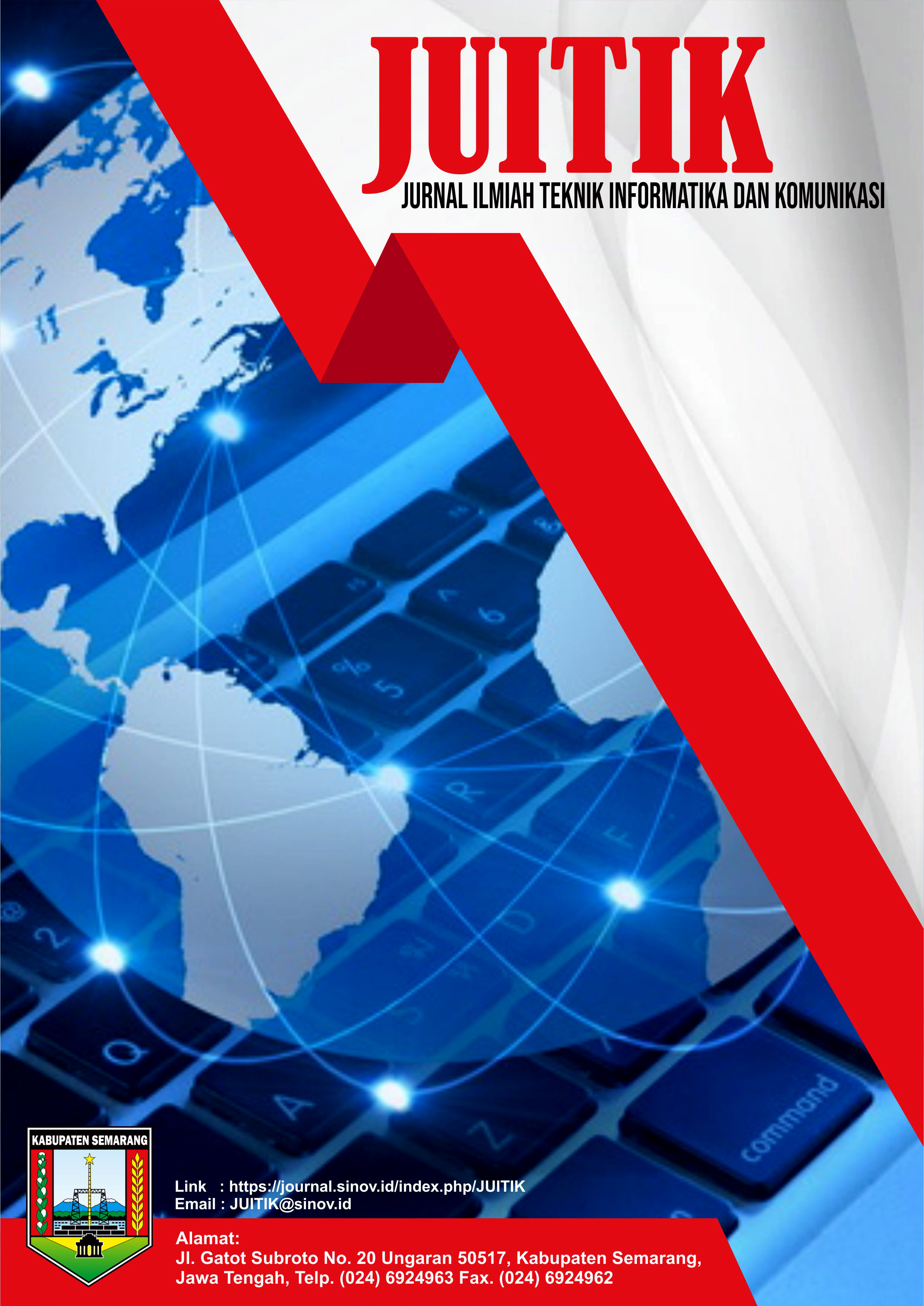Analisis Kualitas Sistem Pengajuan Kartu Pegawai dengan System Usability Scale dan Scrum Berbasis Web
DOI:
https://doi.org/10.55606/juitik.v5i3.1530Keywords:
employee card, web, system, Scrum, SUSAbstract
XYZ is one of the official vendors of PT. Bank Rakyat Indonesia (Persero), Tbk, entrusted with the production of ID Cards or Employee Identification Cards (KTPP). Currently, the KTPP application process at the bank has been implemented through an application, but it still requires a relatively long processing time. Therefore, a web-based application was developed to accelerate the KTPP creation process. The system development was carried out using the Scrum methodology and could be completed within 72 hours or 9 working days, assuming one working day equals eight hours. To measure user satisfaction with this application, particularly among employees of PT. Bank Rakyat Indonesia (Persero), Tbk, the System Usability Scale (SUS) was employed. This method was chosen due to its efficiency, statistical validity, and its ability to provide clear, accurate evaluation scores that can be accessed online at a low cost. The SUS evaluation yielded a score of 72.0, indicating that the system is acceptable and falls within Grade B with a rating of good. These findings demonstrate that the web-based KTPP application system is feasible for implementation and can be effectively used in the KTPP application process within the relevant institution.
References
Azdy, R. A., & Azhari, S. N. (2012, June). Implementasi Scrum pada pengembangan software terdistribusi. In Seminar Nasional Informatika 2012, "Veteran" University of National Development Yogyakarta. https://jurnal.upnyk.ac.id/index.php/semnasif/article/view/1035
Hariyanti, E. (2008). Metodologi pembangunan dashboard sebagai alat monitoring kinerja organisasi: Studi kasus Institut Teknologi Bandung (Tesis). Institut Teknologi Bandung.
HN, I. A., Nugroho, P. I., & Ferdiana, R. (2015). Pengujian usability website menggunakan system usability scale. Jurnal IPTEKKOM (Jurnal Ilmu Pengetahuan & Teknologi Informasi), 17(1), 31–38. https://doi.org/10.17933/iptekkom.17.1.2015.31-38
Huda, N. (2022). Implementasi metode usability testing dengan system usability scale dalam penilaian website RS Siloam Palembang.
Isroatin, S. N. (2020). Usability testing pada sistem Computer Based Testing (CBT) menggunakan System Usability Scale (SUS): Studi kasus di Madrasah Tsanawiyah Miftahul Ulum Kabupaten Bondowoso (Disertasi Doktoral, Universitas Islam Negeri Maulana Malik Ibrahim).
Kembaren, M. F. H., Al Hadi, M. R. S., Aulia, N., & Gibran, M. K. (2025). Analisis usability pada aplikasi mobile menggunakan metode System Usability Scale. RIGGS: Journal of Artificial Intelligence and Digital Business, 4(2), 4722–4727. https://doi.org/10.31004/riggs.v4i2.1315
Kesuma, D. P. (2021). Penggunaan metode System Usability Scale untuk mengukur aspek usability pada media pembelajaran daring di Universitas XYZ. Jurnal Sistem Informasi, 8(3), 345–356. https://doi.org/10.32502/jsi.v8i3.3583
Kharis, Santosa, P. I., & Winarno, W. W. (2019). Evaluasi usability pada sistem informasi pasar kerja menggunakan System Usability Scale (SUS).
Maulana, A. E., Rivai, A. K., & Sarwani, S. (2020). Analisis kualitas sistem layanan penilaian buku pendidikan agama (SiLPBPA) menggunakan metode System Usability Scale (SUS) dan pengembangannya menggunakan Scrum berbasis web. Jurnal Teknik Informatika, 13(2), 103–122.
Mutawalli, L., Fathoni, B. K., & Asyari, H. (2020). Implementasi Scrum dalam pengembangan sistem informasi jasa desain grafis. Jurnal Manajemen Informatika dan Sistem Informasi, 3(2), 116–122.
Panjaitan, U. E., & Hutrianti, H. (2017). System Usability Scale antarmuka Palembang Guide sebagai media pendukung Asian Games XVIII. Journal of Information Systems Engineering and Business Intelligence.
Prasetya, A., Brata, A. H., & Ananta, M. T. (2018). Pengembangan aplikasi pemesanan lapangan futsal di Kota Malang berbasis Android menggunakan metode pengembangan Extreme Programming (studi kasus Champion Tidar, Zona SM Futsal, dan Viva Futsal). Jurnal Pengembangan Teknologi Informasi dan Ilmu Komputer, 2(12), 7293–7301. https://j-ptiik.ub.ac.id/index.php/j-ptiik/article/view/3911
Pudjoatmodjo, B., & Wijaya, R. (2016). Tes kegunaan (usability testing) pada aplikasi kepegawaian dengan menggunakan System Usability Scale (studi kasus: Dinas Pertanian Kabupaten Bandung). Semnasteknomedia Online, 4(1), 2–9.
Ramadhan, B. N., & Sugiyanto, S. (2024). Analisis usability website sistem informasi SD Negeri 1 Wangon menggunakan metode System Usability Scale. Jurnal Informatika Teknologi dan Sains (JINTEKS), 6(3), 421–431. https://doi.org/10.51401/jinteks.v6i3.4512
Zakariah, M. A., Afriani, V., & Zakariah, K. M. (2020). Metodologi penelitian kualitatif, kuantitatif, action research, research and development (R n D). Yayasan Pondok Pesantren Al Mawaddah Warrahmah Kolaka.
Downloads
Published
How to Cite
Issue
Section
License
Copyright (c) 2025 Jurnal Ilmiah Teknik Informatika dan Komunikasi

This work is licensed under a Creative Commons Attribution-ShareAlike 4.0 International License.










